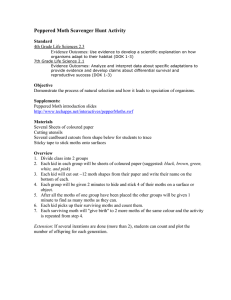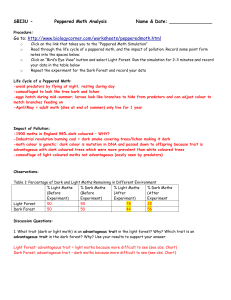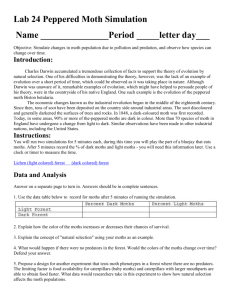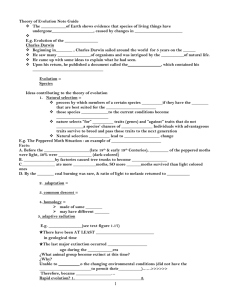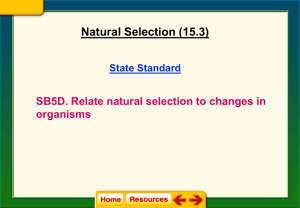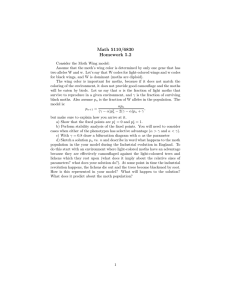Peppered Moth Analysis Worksheet
advertisement
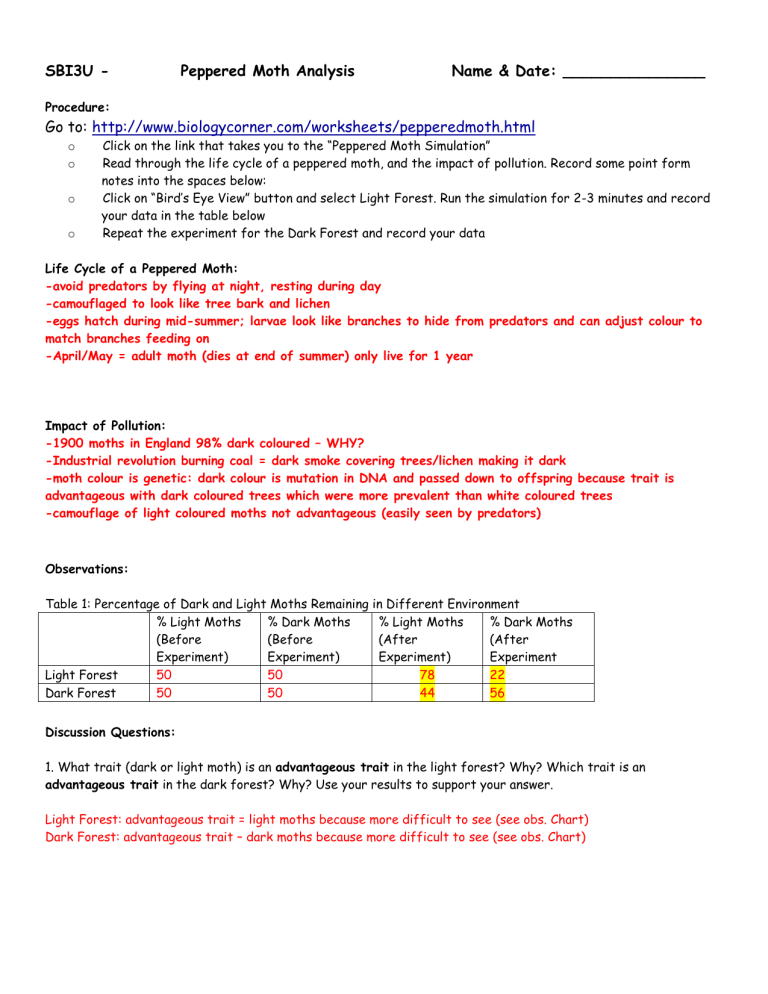
SBI3U - Peppered Moth Analysis Name & Date: _______________ Procedure: Go to: http://www.biologycorner.com/worksheets/pepperedmoth.html o o o o Click on the link that takes you to the “Peppered Moth Simulation” Read through the life cycle of a peppered moth, and the impact of pollution. Record some point form notes into the spaces below: Click on “Bird’s Eye View” button and select Light Forest. Run the simulation for 2-3 minutes and record your data in the table below Repeat the experiment for the Dark Forest and record your data Life Cycle of a Peppered Moth: -avoid predators by flying at night, resting during day -camouflaged to look like tree bark and lichen -eggs hatch during mid-summer; larvae look like branches to hide from predators and can adjust colour to match branches feeding on -April/May = adult moth (dies at end of summer) only live for 1 year Impact of Pollution: -1900 moths in England 98% dark coloured – WHY? -Industrial revolution burning coal = dark smoke covering trees/lichen making it dark -moth colour is genetic: dark colour is mutation in DNA and passed down to offspring because trait is advantageous with dark coloured trees which were more prevalent than white coloured trees -camouflage of light coloured moths not advantageous (easily seen by predators) Observations: Table 1: Percentage of Dark and Light Moths Remaining in Different Environment % Light Moths % Dark Moths % Light Moths % Dark Moths (Before (Before (After (After Experiment) Experiment) Experiment) Experiment Light Forest 50 50 78 22 Dark Forest 50 50 44 56 Discussion Questions: 1. What trait (dark or light moth) is an advantageous trait in the light forest? Why? Which trait is an advantageous trait in the dark forest? Why? Use your results to support your answer. Light Forest: advantageous trait = light moths because more difficult to see (see obs. Chart) Dark Forest: advantageous trait – dark moths because more difficult to see (see obs. Chart) 2. What do you think would happen if you ran the simulation (for both forests) for 10 minutes instead of 1 minute? -percentages would show much more significant differences (e.g. 90% dark vs 10% light) because there is more time to eat light coloured moths 3. Using Darwin’s three observations, explain how the peppered moth population has evolved in the dark forest and in the light forest. Observation 1 (individuals within a population vary in their traits) -moth colour is an inherited trait/characteristic that varies amongst moth pop’n Observation 2 (overpopulation) -moths life cycle is very short <1 year -lay many eggs per reproductive cycle but not all can survive Observation 3 (some traits are more advantageous than others) -dark colour is advantageous to light colour because it camouflages moths against dark trees covered in soot Result: -mixed 50/50 light dark moths pop’n to predominantly more dark coloured moths due to natural selection This worksheet won’t be marked, but please make sure you understand the concepts, as they may show up on future assessments!
